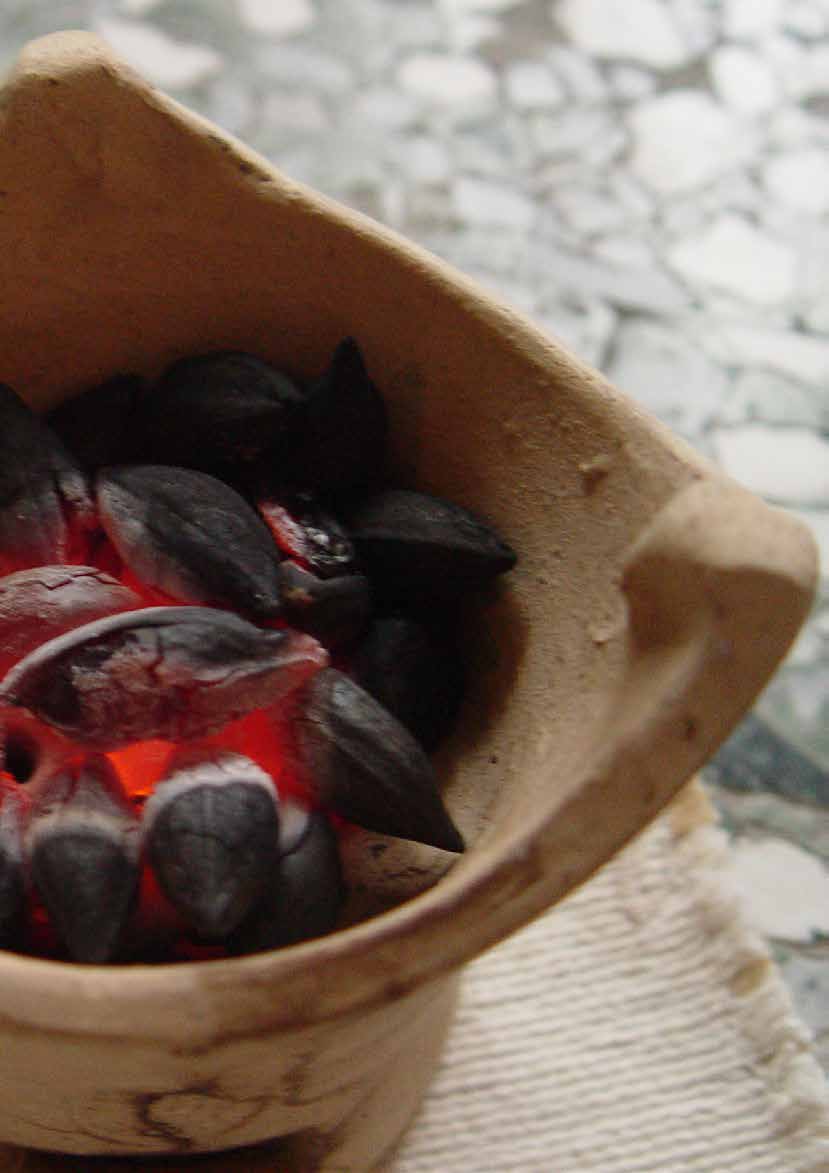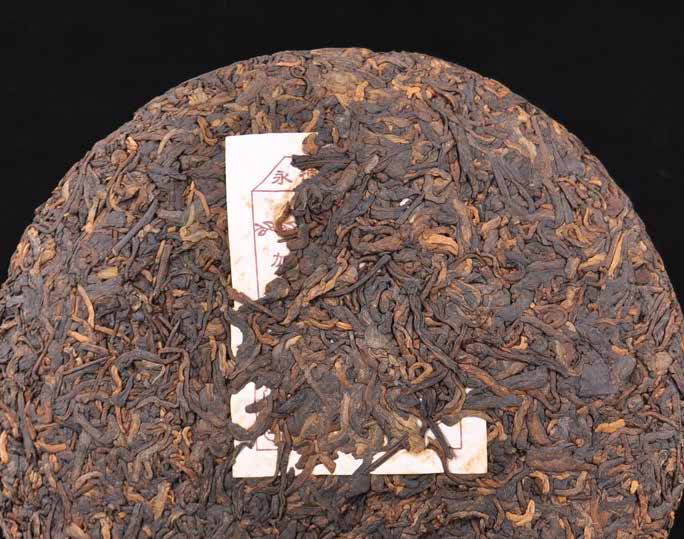
 |
|
We humans have a bad habit of assuming that the categories and rational interpretations we make of the world somehow exist in the world itself. Of course, categorizing, analyzing and improving our lives is a huge part of how we have evolved, and not something to take lightly. Tea lovers are no different: often confusing what should help us clarify our understanding of different kinds of tea, and in the end only confusing ourselves.

It is important for our survival that we make quick, interpretive decisions. If I am walking down the street late at night in a foreign country and some rowdy men are coming from the other direction, it makes sense for me to cross the road. Such a decision dates back to when we were hominids in the grass, and learned - perhaps the hard way - that when the grass moves, you go back up the tree! It doesn't matter if it isn't a lion or just the wind. The men coming may just be happy because their football team just won, but I still cross the street. It is only natural for me to do so.
Where our problem arises is when we start to take our stereotypes, categories and analyses too seriously and view them as "real" or when this habit becomes too pronounced and we start making too many judgments based on artificial, and ultimately arbitrary, categories.

The ability to categorize the world should help us to first of all better understand Nature, and second to better communicate our understanding to others. Categories that fail in either of these ways are no longer useful, and should be abandoned for better ones. There's no use arguing about a mind-made category, for if it is causing too much debate it is no longer functioning as a rational clarifier or a communicative. And remember: our categories aren't real anyway!
You may be wondering what this discussion has to do with our tea of the month, but it does - very much so. This dysfunction is very true of the traditional six categories of tea. One of them confuses more than it clarifies, and requires too much extra explanation. For that reason, in my teaching, I always advocate a seventh, distinct category for Puerh tea.
Traditionally, Puerh tea is always put in the Black Tea category. As we have often discussed, 'Red Tea' is what is often mistakenly called 'Black Tea' in the West. Ordinarily, a name doesn't matter so much and we wouldn't even take the time to correct this age-old mistake, and most vendors don't. But in this case there is an important issue that a Chajin (tea person) will face if this Spring 2012, Shou Puerh, Yong De, Yunnan mistake isn't corrected: there is another genre of tea in China called "Black Tea". So if you call Red Tea "Black", then what do you call Black Tea? The problem began because early trade between Chinese and Europeans was limited to the ports, and most merchants/sailors didn't see the tea trees, farms or processing and learned what they knew in broken Pidgin English on the docks, and often from Chinese merchants who didn't care to correct them. Actually, Europeans used to call Oolong tea "Black Tea" as well, probably because it has the word "black" in the name ("Oolong" means "Black Dragon").
Real Black Tea is characterized by post-production artificial fermentation. In other words, it is fermented with moisture, heat and bacteria after being processed. Now, as most of you will remember, there are two kinds of Puerh tea: Raw (Sheng) and Ripe (Shou). Shou Puerh is indeed a kind of Black Tea. In fact, the processing of Shou Puerh was based on years of research and experimentation based on Black Tea production. Sheng Puerh, however, is green and astringent when processed. It ages over time, slowly. A lot of tea authors just lump Sheng and Shou into the category of Black Tea because it is all fermented tea, whether naturally or artificially. And that system worked twenty years ago when everyone who drank Puerh tea only drank Shou or at least aged (and therefore fully fermented) Sheng. At that time, no one was drinking young, green Sheng Puerh. Aged Puerh is better, and wasn't so expensive in those days. Also, most Chinese people have cold bodies ("cold" in the Chinese medicine sense, not temperature) so too much young Sheng Puerh, which is cool in nature, is not good for them. Since almost all the Puerh consumed in those days was either dark, aged, fermented Sheng or artificially fermented (and also dark) Shou Puerh, it made sense to categorize Puerh as a Black Tea. It no longer does, though.
Nowadays, we consume a lot of young Sheng, Chinese and foreigner alike. Aged Sheng is very expensive, and though better, there is still a different kind of magic in drinking a young, brisk and green Sheng Puerh. And since Sheng Puerh is produced in much larger volume than Shou, and therefore represents the greater portion of Puerh tea, and since it is also the older, more traditional kind of Puerh, it consequently should no longer be put in the category of Black Tea. Why not give this unique category of tea its own place, especially if clarity and communication are the goals of categorization in the first place?
If we are too caught in our categories, or even the ability to categorize itself, we are lost in delusion. Categorizing is like holding a net up between us and the world, using the squares to count and compare the size of mountains. But the squares are not a part of the mountains themselves, and are only useful for clarifying our understanding of the mountains, or communicating said understanding to others. This can't be stated enough. So, herald the category of "Puerh Tea", distinct enough from other kinds of tea to warrant its own category!
In the sixties, research on Shou Puerh began. Most books record 1972 as the beginning of Shou tea, as that was the time the major factories in Yunnan were licensed by the government to begin production. Before that, however, several experimental batches were made. The Puerh tea industry wanted to find a way to artificially mimic the many years it takes to ferment Sheng Puerh to a dark, rich and amazingly medicinal brew. They thought they could use modern science to speed the process up, which was of course impossible. What they did succeed in doing, was to create a new genre of Puerh tea - one that should be evaluated on its own terms. Comparing Shou Puerh to Sheng (aged or new) is pointless.
Most of the research that went into developing Shou processing came from Liu Bao, a Black Tea from Guangxi. Through research and experimentation, the artificial fermentation process was tweaked to suit Puerh. Puerh is picked, withered, fried (sa cheen) to arrest oxidation, rolled to break down the cells and shape the tea and then dried in the sun. The partial frying (sa cheen) and the sun drying are particular to Puerh tea. Since the tea is only partially fried, many of the green enzymes that make tea bitter are still present, and this helps the tea to ferment post production. Also, Puerh tea trees grow in a vibrant, humid rainforest in Yunnan so the leaves are covered in bacteria and molds even before they are picked. These microorganisms have an ancient and profound relationship with Puerh tea, which is one the main reasons it ferments so much better than any other kind of tea.
To make Shou Puerh, the raw tea (mao cha) from the farm, which has gone through the process stated above, is then piled in a method called "wo dui". The piled tea is moistened and covered with a thermal blanket. Sometimes bacteria is introduced from previous batches of Shou Puerh production. The heat and moisture under the blanket speed up fermentation. The pile is occasionally stirred as it ferments for anywhere from one month to two, with most Shou fermented for 45 days. If the tea is fully fermented it will be darker, but often have a slightly "pondy", ammonia taste that will mellow over time. If the fermentation is stopped earlier, the tea will still be greener and therefore have the potential to age, though it won't be as good for immediate consumption. Obviously, this artificial fermentation process is very difficult, and requires a tremendous amount of skill, as well as constant monitoring of hygiene and other factors, since any fermentation process can potentially be unhealthy if the wrong microorganisms start thriving in the culture.

This Shou tea from the Yong De Zi Yu tea factory has become one of our favorite Ripe Puerh teas. Yong De Zi Yu tea factory is one of our favorites. They produce tea in the "Five Mountain" area of Lincang that is the origin of all tea in the world. Though there is some debate as to where tea first arose, and many regions that would like to lay claim to this, we have found the Five Mountains to be older and more deeply connected to Tea than the other regions that make this claim. The Five Mountains are: Min Feng, Mang Fei, Wu Jia Zhai, Da Xue Shan, and Mei Zi Qing. Our Shou is a blend from several of these mountains.
Our tea of the month has been certified organic by the China Organic Food Certification Center (COFCC). This tea is also special because instead of using inferior summer harvest Puerh for fermentation, first flush spring material was used. Shou tea is cheaper than Sheng, so inferior raw materials are almost always used. It is rare to encounter a Shou tea made of such awesome spring-harvested tea, as it means the Shou cake has to be sold at the same price as the Sheng. The fermentation of these cakes occurred in 2011, when the tea was harvested, but the tea was pressed in 2012.
This Shou tea is creamy and delicious and will warm you up this winter season. It has spicy notes and a warm, rising Yang Qi that then later descends and grounds you. Our gift this month is some organic orange peels. If you are in a festive mood, invite some friends over and boil and/or steep this Shou with just a few orange peels for a more delicious and generally grounding brew. You will find your respiratory and immune system activated by the combination. What a great way to spend some time with the people you love!
